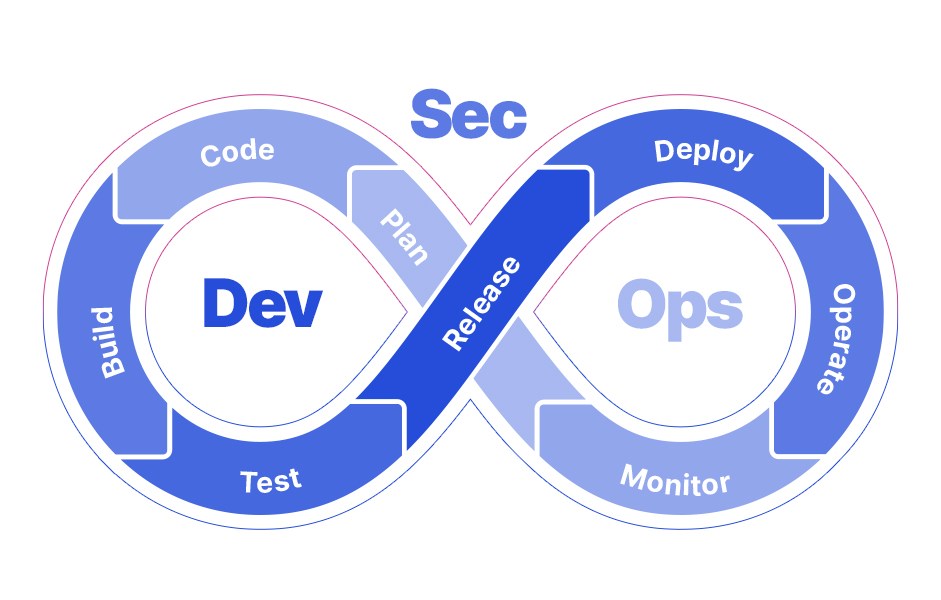DevSecOps - Overview
DevSecOps Overview
DevSecOps - Overview
Introduction
As DevOps continues to revolutionize software development, security has become a critical concern. DevSecOps, which integrates security into the DevOps workflow, ensures that security is not an afterthought but a built-in process throughout the software development lifecycle (SDLC).
DevSecOps
- DevSecOps is a software development approach that integrates security practices into the DevOps process.
- In traditional software development, security is often addressed at the end of the development process, leading to vulnerabilities and potential breaches.
- By incorporating security practices early on, DevSecOps enables organizations to build secure and resilient systems.
- It involves automating security testing, continuous monitoring, and implementing security controls throughout the development pipeline.
- One of the key principles of DevSecOps is shifting security left, which means addressing security concerns as early as possible in the development process.
- This includes conducting security code reviews, performing static and dynamic analysis, and integrating security testing into the CI/CD pipeline.
- Another important aspect of DevSecOps is the use of infrastructure as code (IaC) and configuration management tools.
- These tools allow for the definition and enforcement of security policies, making it easier to maintain a secure infrastructure.
DevSecOps Tools
| Stages | Tools |
|---|---|
| IDE Plugins | DevSkim, JFrog Eclipse, Snyk |
| Pre-Commit Hooks | git-hound, git-secrets, repo-supervisor |
| Secrets Management Tools | Amazon Web Services(AWS), Microsoft, Google |
| Static Application Security Testing (SAST) | Checkmarx, ECG, DerScanner |
| Source Composition Analysis (SCA) | GitHub, BlackDuck, Synx |
| Dynamic Application Security Testing (DAST) | Rapid1, Contrast Security, Acunetix, SonarQube |
| Interactive Application Security Testing (IAST) | Contrast Security, Synopsis, VeraCode |
| Secure infrastructure as code | Cliar, Dockscan, Anchore, tfsec, kube-sec |
| Compliance as code | KitchenCI, ServerSPEC, CHEF INSPEC |
| Runtime application self-protection (RASP) | Signal Sciences, Trend Micro, Imperva |
| Web Application Firewall (WAF) | Azure WAF, AWS WAF, GCP WAF, Cloudflare, Imperva and Wallarm |
| Vulnerability management | Hacker, Archery, Qualys, Microsoft Defender |
Key Benefits of DevSecOps
Early Threat Detection: Identifies vulnerabilities before they reach production.Faster Remediation: Fix security issues in development rather than post-deployment.Regulatory Compliance: Helps meet security standards and compliance requirements.Reduced Costs: Catching security flaws early prevents costly fixes later.
Securing Your CI/CD Pipeline: Step-by-Step Guide
- Shift Security Left
- Start integrating security at the beginning of the SDLC. This includes:
Secure Coding Practices: Use tools like SonarQube to analyze code quality.Static Application Security Testing (SAST): Use tools like Checkmarx or Snyk to scan for vulnerabilities in source code.
- Start integrating security at the beginning of the SDLC. This includes:
- Automated Security Testing in CI/CD
Static Code Analysis (SAST): Scans for vulnerabilities in source code before deployment.Dynamic Application Security Testing (DAST): Simulates attacks on running applications to detect security flaws.Software Composition Analysis (SCA): Identifies vulnerabilities in third-party dependencies.
- Implement Access Control
Use the Principle of Least Privilege (PoLP): Grant users and services only the permissions they need.Use Role-Based Access Control (RBAC)to restrict access.Enable Multi-Factor Authentication (MFA)for CI/CD tools.
- Secure Secrets Management
- Store sensitive credentials securely using HashiCorp Vault, AWS Secrets Manager, or Kubernetes Secrets.
- Avoid hardcoding secrets in repositories; use environment variables instead.
- Container Security
- Scan container images for vulnerabilities using Trivy or Clair.
- Use immutable infrastructure to reduce risks associated with outdated dependencies.
- Implement runtime security with tools like Falco or Aqua Security.
- Continuous Monitoring & Logging
- Use SIEM (Security Information and Event Management) tools like Splunk or ELK Stack for log analysis.
- Monitor CI/CD activities using AWS CloudTrail, Prometheus, or Grafana.
- Incident Response Plan
- Define a security incident response plan.
- Automate alerts for suspicious activity using Slack, PagerDuty, or OpsGenie.
Real-World Applications of DevSecOps
Example 1: Securing a Jenkins CI/CD Pipeline
- Implement SAST tools like SonarQube for automated code scanning.
- Integrate Snyk to scan dependencies for vulnerabilities.
- Use RBAC to control Jenkins user access.
- Store secrets securely using HashiCorp Vault.
Monitor Jenkins logs using ELK Stack.
Example 2: Securing a Kubernetes Deployment
- Implement Pod Security Policies (PSPs).
- Use Trivy to scan container images.
- Secure network traffic with Istio Service Mesh.
- Continuously monitor Kubernetes clusters using Falco.
Common Mistakes & Best Practices
- Common Mistakes
- Hardcoding credentials in repositories.
- Ignoring security testing in CI/CD pipelines.
- Granting excessive permissions to users.
- Using outdated dependencies without vulnerability checks.
- Best Practices
- Automate security scans at every CI/CD stage.
- Use Infrastructure as Code (IaC) security tools like Terraform Sentinel.
- Regularly update dependencies and patches.
- Conduct security awareness training for developers.
Conclusion
DevSecOps is an essential practice for securing modern CI/CD pipelines. By integrating security from the beginning, automating security testing, and continuously monitoring for threats, DevOps teams can build more resilient software. Start implementing DevSecOps today to protect your applications from cyber threats.
This post is licensed under CC BY 4.0 by the author.
